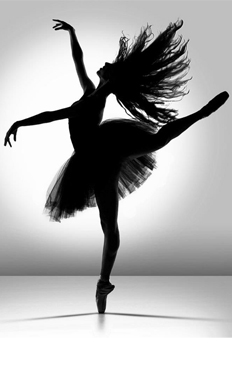Rules of the Competitions : Ballet competition

Perform an act from Spartacus by Khachaturian
$2000 Jury winner prize
$500 Audience voting prize
No entry fees for the contest
Only the duet of Ballet spartacus and Phrygia, Act 3 Adagio, with playback music
Only 70 entries will be accepted and judged
Artists must be 24 years or younger
Accepting entries from 1st March 2023
If you’re facing any issues, email us the details at [email protected]
Spartacus, a ballet composed by Armenian composer Aram Khachaturian in 1954, is a powerful piece of music that tells the story of the slave revolt led by the gladiator Spartacus against the Roman Empire. The ballet is renowned for its sweeping melodies, thunderous percussion, and evocative themes, which paint a vivid picture of the struggle for freedom against oppression.
One of the most famous acts of Spartacus is Act II, Scene 1: Adagio of Spartacus and Phrygia. This hauntingly beautiful piece of music is a duet between Spartacus and his lover, Phrygia. The adagio is a slow, graceful dance that expresses the deep love and devotion between the two characters, who are torn apart by the forces of tyranny and oppression.
The Adagio begins with a mournful oboe solo that sets the tone for the entire piece. The oboe’s plaintive melody is joined by a gentle harp accompaniment, which creates a sense of intimacy and tenderness. As the music progresses, the string section enters, playing a lush, romantic melody that swells and subsides like the ebb and flow of the sea.
As Spartacus and Phrygia take to the stage, the music becomes even more expressive. The dancers move with fluid grace, their bodies intertwining and separating as they express the depth of their love for one another. The Adagio’s central theme, played by the violin, is both sweet and melancholy, underscoring the bittersweet nature of their relationship.
As the duet progresses, the music builds to a powerful climax for ballet competition. The percussion section enters, pounding out a martial rhythm that signifies the coming conflict between Spartacus and the Roman Empire. But even as the drums roll and the trumpets blare, Spartacus and Phrygia remain locked in their own world, oblivious to the world outside.
The Adagio of Spartacus and Phrygia is a deeply moving piece of music that captures the essence of the ballet as a whole. It is a testament to the power of love and the human spirit, and a reminder that even in the darkest of times, there is still beauty to be found.
In conclusion, Aram Khachaturian’s Spartacus is a masterpiece of ballet music, and the Adagio of Spartacus and Phrygia is one of its most memorable acts. Its sweeping melodies, powerful rhythms, and evocative themes capture the essence of the struggle for freedom against oppression, and remind us of the enduring power of love in the face of adversity.
Ballet competitions are a showcase of technical skill, artistic expression, and creativity. Dancers from all over the world come together to compete, pushing themselves to the limit and striving to create performances that will leave a lasting impression on the judges and the audience. One act that is sure to impress both judges and audiences alike is the ballet Spartacus by Armenian composer Aram Khachaturian.
Spartacus is a challenging ballet, requiring both technical precision and emotional depth from its performers. One act that stands out in particular is the Adagio of Spartacus and Phrygia. This duet requires a deep understanding of the characters and their motivations, as well as a mastery of the complex choreography.
To succeed in a competition, dancers must be able to fully embody the characters they are portraying. In the Adagio of Spartacus and Phrygia, the dancers must convey the depth of emotion and passion that exists between the two characters. This requires a deep understanding of the music and the story, as well as the ability to communicate that understanding through movement.
In addition to emotional expression, technical precision is also crucial in this act. The Adagio features complex lifts, turns, and partnering work that require a high level of strength and coordination. Dancers must be able to execute these movements flawlessly, while also maintaining the fluidity and grace that is essential to ballet.
The music of Khachaturian is an integral part of the Adagio, and dancers must be able to interpret the music with sensitivity and nuance. The Adagio begins with a mournful oboe solo that sets the tone for the entire piece. The dancers must be able to match the music’s mood and tempo, conveying a sense of intimacy and tenderness through their movements.
As the duet progresses, the music builds to a powerful climax. The percussion section enters, pounding out a martial rhythm that signifies the coming conflict between Spartacus and the Roman Empire. The dancers must be able to match the intensity of the music, conveying the sense of impending conflict through their movements.
In conclusion, the Adagio of Spartacus and Phrygia is a challenging and rewarding piece of ballet, perfect for competition performances. Dancers who are able to fully embody the characters, execute the technical choreography with precision, and interpret the music with sensitivity and nuance are sure to impress judges and audiences alike. With its powerful themes of love, passion, and conflict, the Adagio of Spartacus and Phrygia is a true showcase of the artistry and athleticism of ballet.
